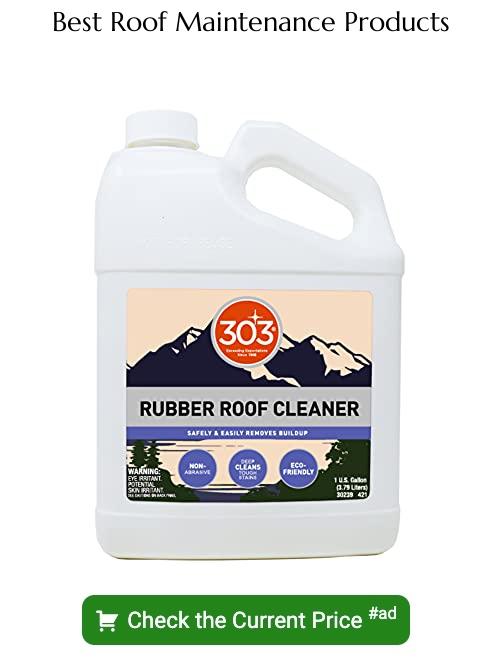Last updated on
Understanding the lifespan of a concrete tile roof is essential for homeowners, and this article provides detailed information on the expected durability and factors that can influence its longevity.
Key takeaways:
- Concrete tile roofs typically last 50+ years.
- Material composition, resistance to elements, low thermal conductivity, and color longevity contribute to concrete tile roof durability.
- Key factors affecting lifespan: climate, installation quality, roof pitch, color, maintenance, and coastal exposure.
- Regular maintenance, including inspections, repairs, and cleaning, is crucial for extending concrete tile roof life.
- The underlayment’s breathability, water resistance, installation, and material durability impact the lifespan of a concrete tile roof.
Average Lifespan of Concrete Tile Roofs

Concrete tile roofs are renowned for their durability and longevity, typically lasting 50 years or more with proper installation and maintenance. Their resilience stems from the inherent strength of concrete, which stands up well to varying weather conditions.
Several features contribute to the impressive lifespan of concrete tile roofs:
- Material Composition: Concrete tiles consist of a mixture of cement, sand, and water, which is naturally resistant to fire, rot, and insect damage.
- Resistance to Elements: These tiles can endure high winds, hail, and even earthquakes, making them an ideal choice for areas prone to severe weather.
- Low Thermal Conductivity: Concrete’s low thermal conductivity reduces the heat transfer into attics, potentially extending the life of the roofing structure by minimizing expansion and contraction cycles.
- Color Longevity: High-quality concrete tiles often include colorfast pigments that resist fading, maintaining their aesthetic appeal over time.
Factors Affecting Concrete Tile Roof Lifespan
Concrete tiles are renowned for their durability, yet their longevity can be influenced by several key factors:
1. Climate: Extreme weather patterns, including freeze-thaw cycles, high winds, and hail, can accelerate the degradation of roofing materials.
2. Installation Quality: Properly installed concrete tiles can significantly extend a roof’s life. Incorrect installation can lead to premature failure.
3. Roof Pitch: The angle of the roof affects water drainage. Low-pitched roofs tend to retain moisture longer, potentially reducing the lifespan of the tiles.
4. Color: Lighter-colored tiles reflect sunlight, thereby reducing heat absorption and minimizing thermal stress.
5. Maintenance: Regular cleaning to remove dirt, debris, and algae, as well as timely repairs, can prevent minor issues from escalating into costly problems.
6. Coastal Exposure: Salt air and sea spray can erode concrete tile surfaces over time, particularly in homes near the coast.
By addressing these factors proactively, homeowners can help ensure their concrete tile roofs reach or exceed their expected lifespans.
Maintenance and Upkeep
Regular maintenance is crucial to extending the life of a concrete tile roof. This includes routine inspections to identify and repair broken or shifted tiles promptly, preventing moisture penetration that can damage the underlying structure.
Cleaning gutters and downspouts ensures proper water drainage, averting potential water buildup that can lead to leaks or tile displacement. Moreover, addressing the growth of moss, algae, or mold not only preserves the aesthetic value of the roof but also prevents deterioration of tiles.
It’s advisable to have these tasks performed by professionals who can navigate the roof safely and have the expertise to maintain the integrity of the tiles during inspection and cleaning procedures.
Impact of Underlayment On Lifespan
The underlayment of a concrete tile roof acts as a secondary barrier against water and environmental elements. Its integrity is critical for the overall longevity of the roofing system. A high-quality, properly installed underlayment can significantly extend the life of a concrete tile roof, often by decades.
- Breathability: The underlayment allows the roof to “breathe,” reducing the potential for moisture buildup that can lead to mold and rot.
- Water Resistance: It provides an extra layer of protection from rain, especially in wind-driven conditions where water might seep under tiles.
- Installation: A well-fitted underlayment with minimal seams offers fewer chances for water ingress, thus protecting the roof structure.
- Material Durability: Synthetic underlayments tend to be more durable and water-resistant than traditional asphalt-saturated felt.
Regular inspections ensure the underlayment remains intact, and prompt repairs are essential to maintaining the defense it offers, directly influencing the roof’s lifespan.
Cost Consideration
When evaluating the initial price of concrete tile roofing, it is essential to factor in both the material and installation costs, which can be higher than other roofing options. These tiles are not only durable but also add aesthetic value to a property, which can be appealing to homeowners concerned with both functionality and visual appeal.
Over time, the investment in concrete tiles may prove economically sound due to their longevity. While the upfront cost is considerable, the extended lifespan minimizes the need for frequent replacements. This reduced frequency of roof renewal can lead to substantial savings over the decades.
Additionally, homeowners should consider potential energy savings associated with concrete tiles. Their thermal properties can help regulate indoor temperatures, possibly lowering heating and cooling expenses. These energy efficiency benefits can contribute to ongoing cost reductions throughout the roof’s life.
Insurance premiums are another financial aspect to take into account. Some insurers may offer discounts for homes with concrete tile roofs due to their resistance to fire, hail, and wind, which could result in lower insurance costs over the long term.
FAQ
How long should concrete tile roof last?
Concrete tile roofs typically last up to 50 years, although the underlayment may necessitate replacement roughly every 20 years.
Are concrete tiles good for roof?
Concrete tiles are a viable roofing choice, capable of lasting between 30 to 50 years.
Do concrete roof tiles become brittle?
Contrary to common belief, concrete roof tiles do not become brittle with age; instead, they enhance in strength over many years.
What are the disadvantages of cement tiles?
The disadvantages of cement tiles are that they are heavier than ceramic tiles, potentially complicating installation, and may require a sturdy substrate to support their weight which may not be suitable for all renovation projects.
What maintenance is required for a concrete tile roof?
Concrete tile roof maintenance requires periodic inspections for cracks or broken tiles, cleaning to remove debris, and sealing or painting to maintain its appearance and protective properties.
How does climate impact the durability of concrete roof tiles?
Climate significantly impacts the durability of concrete roof tiles as they may deteriorate rapidly in harsh weather conditions, including extreme temperatures, high winds, and heavy rain.
Can concrete roof tiles be painted or sealed for longevity?
Yes, concrete roof tiles can be both painted and sealed to enhance their longevity.





